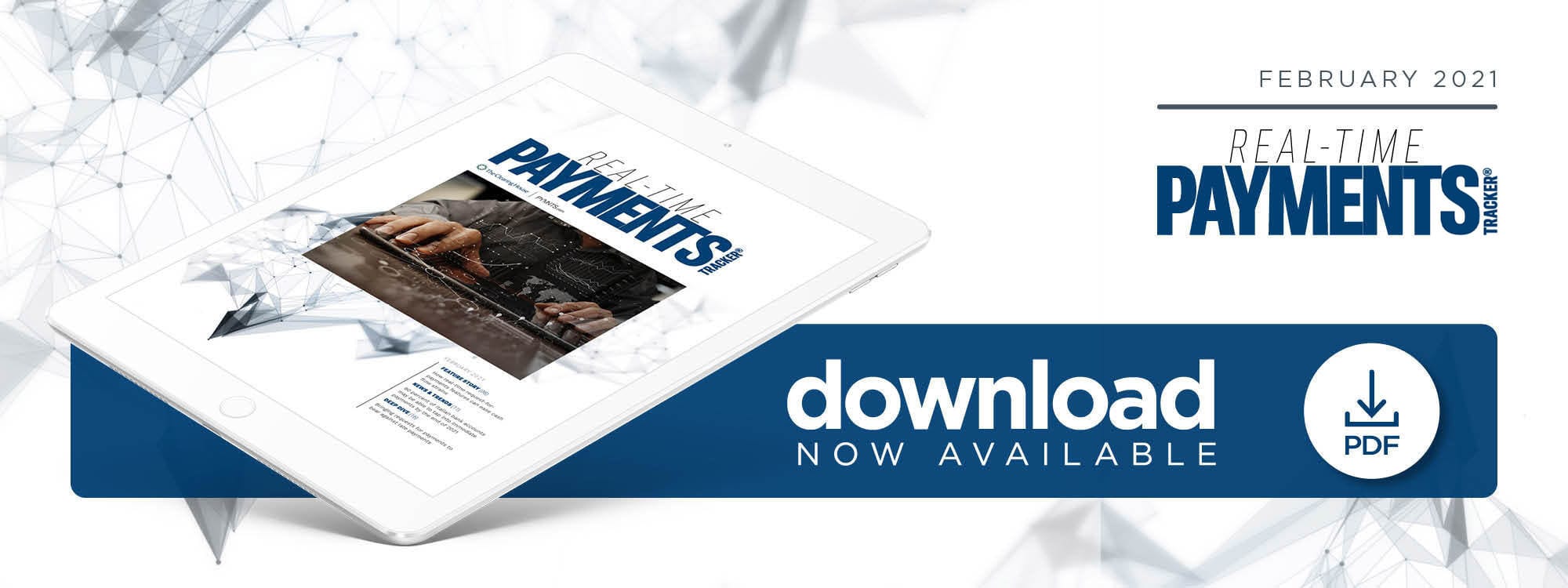How Real-Time Request-For-Payment Features Can Ease Cash Flow Strains

Late payments can sink businesses, but there is a fix: request-for-payment that allows consumers to pay and billers to instantly receive funds. Hisham Salama, executive vice president and chief digital officer at Bank of the West, explains how pairing request-for-payment features with real-time payment options can usher in “payments nirvana” for businesses in this month’s Real-Time Payments Tracker.
Businesses have become laser-focused on their cash flows while enduring the challenges of the pandemic. Late customer payments, which are pain points even during the best of times, became more commonplace last year, and too many late payments could spell disaster for these businesses. A July 2020 survey found that 48 percent of Canadian and U.S. SMBs said the next missed payment could cause them to go under. Issues like these are making business owners especially sensitive to the differences between when their clients use slow-moving paper checks to pay and when they use speedy digital methods.
Many businesses have been interested in payment systems that can deliver funds within minutes or even immediately, said Hisham Salama, executive vice president and chief digital officer at Bank of the West. Salama recently spoke with PYMNTS about the impact that real-time request-for-payment messaging capabilities could make on the space. Bank of the West, which offers payments through the Zelle and RTP® networks, recently launched the latter’s request-for-payment feature. It has been paying close attention to how such capabilities are being used and the implications for the future of commerce.
Smoother Customer Payments
Immediate payment networks, when paired with request-for-payment features, can streamline consumer-to-business (C2B) and B2B transactions by cutting out unnecessary steps, Salama said. These capabilities allow businesses to deliver invoices via faster payment networks, thus pairing their bills with a payment method customers can use. This approach can provide a smooth way for consumer and business clients to immediately handle payments, sparing customers from having to pull up separate payment portals or write checks that they need to put in the mail. This convenience may create a stronger call to action as well, prompting quicker customer response to invoices.
“The way traditional payments have functioned in the past, … you as the consumer or the client receive that bill, but there’s no direct linkage to pay,” Salama said. “We’re starting to combine those actions together, and, more importantly, it’s baked into the actual rail. This is bringing everything two or three steps closer to this payments nirvana, from a business standpoint.”
This streamlined approach also naturally directs customers to use the immediate payment methods to send back funds. That alone can be a major draw for businesses eager to get paid fast, Salama said.
Reconciliation And Banking
Rapid turnaround and quick fund deliveries can be particularly important for firms looking to safeguard their cash flows during the pandemic. Businesses aiming to receive funds and have them ready to use as quickly as possible are also likely to be interested in making their reconciliation processes more efficient and accurate. Immediate payment networks with request-for-payment features can help by providing plenty of data alongside the payments, such as by associating transactions with the payment request that prompted them.
“Real-time payments has the ability to help a business — whether that’s small and medium-size or commercial — manage cash flow a little bit better,” Salama said. “Invoicing, payments — all of these pieces are done in real time, so you have a much better line of sight to a real-time view of cash flow.”
Businesses can also use these solutions to streamline how they interact with their banks. Salama believes immediate request-for-payment capabilities could help businesses transfer funds when they open accounts at new FIs, enabling them to get up and running fast. “If a customer [of a bank] is opening an account, on day one we [could] request funds from their existing bank and fund that account in real time,” he noted. “That’s a material difference in how the world was working five years ago, or even last year.”
Banks and businesses are likely to continue to discover new use cases for immediate payments with request-for-payment features as they become more familiar with the services. The pandemic has made finding that efficiency even more important, and firms that have grown increasingly concerned about their cash flows during this crisis may find that real-time requests for payments can help put them more at ease now and for the long term.

